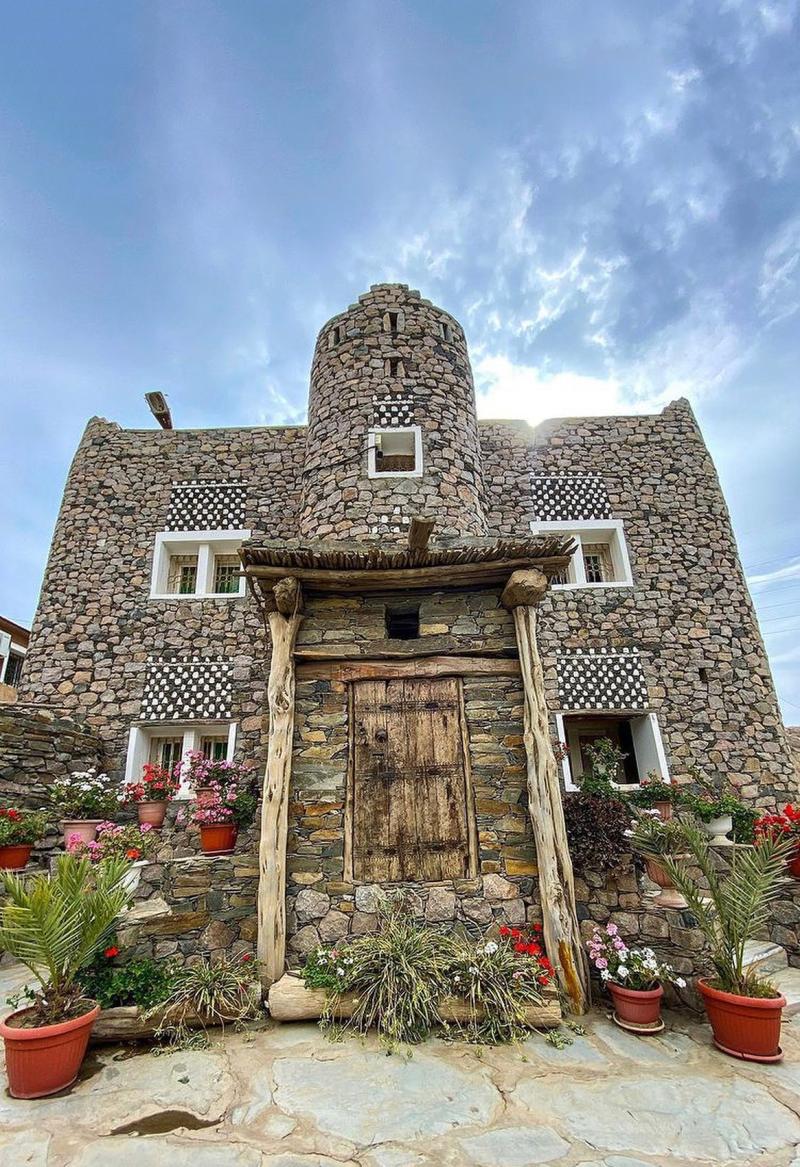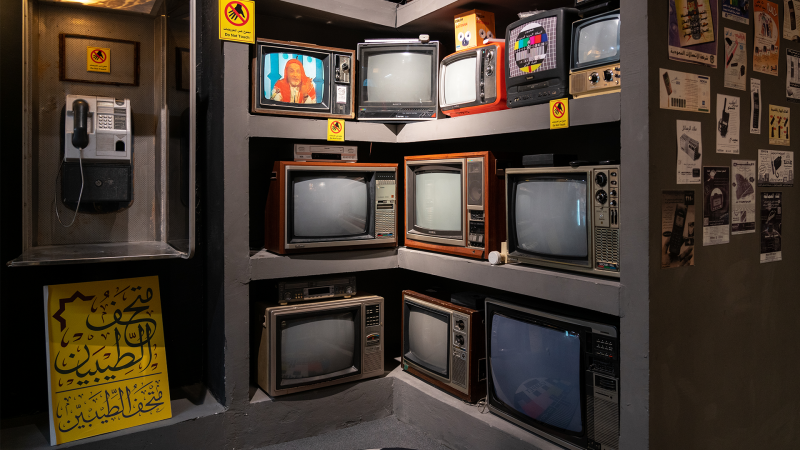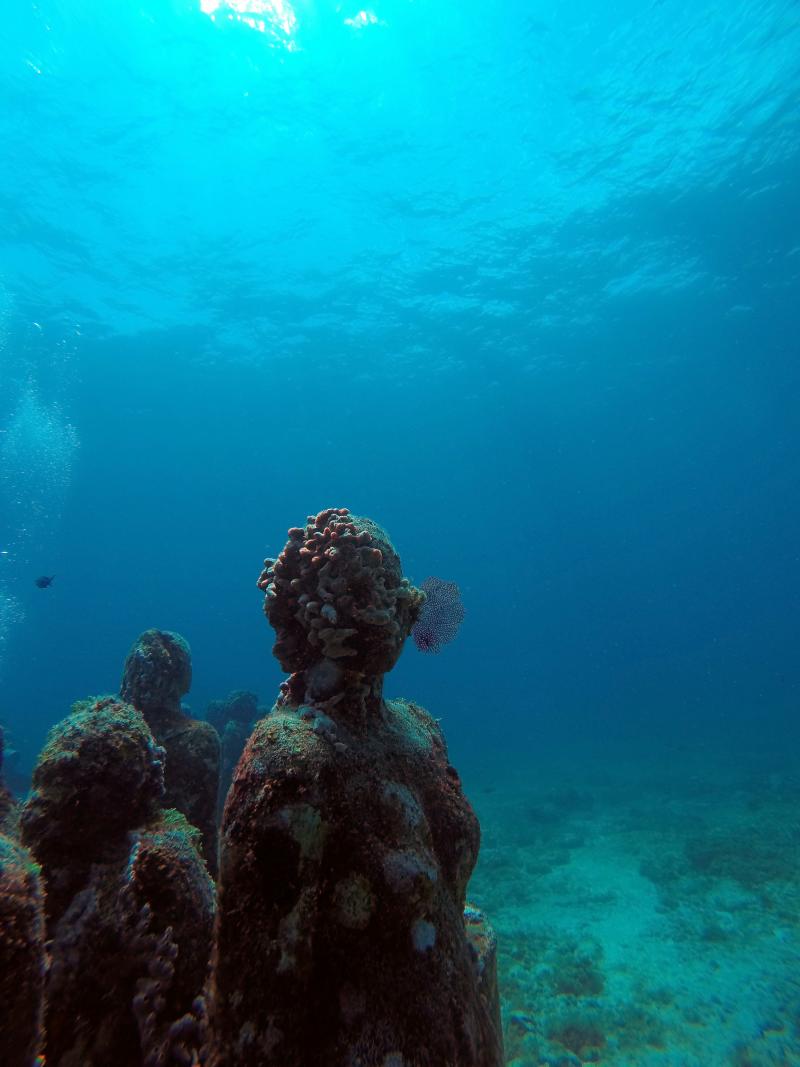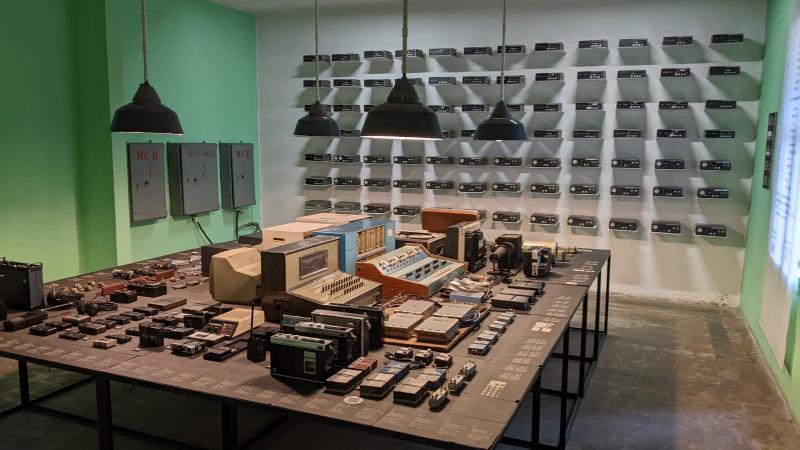10 weird and wonderful museums in Saudi and around the world
10 weird and wonderful museums in Saudi and around the world
Anchored in heartache, located in ill-famed structures, submerged in water, dedicated to strange subject matter – these museums belong on your bucket list for their uniqueness alone

Whether you're a history buff, a science geek, or merely an aesthete, museums have an innate ability to inspire and educate, and there's a whole host of new ones on the horizon.
Based in Jeddah, the Red Sea Museum will narrate tales of maritime culture, while teamLab Borderless Jeddah will create interactive spaces that blur physical boundaries between artworks. Elsewhere, the Contemporary Art Museum is slated to debut in AlUla, displaying pieces by Saudi and international artists alike. Nothing, however, beats a museum with a novelty factor.
The Museum of Happiness, for example, helped boost the serotonin levels of Riyadh residents thanks to multi-sensory installations rooted in the elusive state of happiness. Life is just better in a pool full of marshmallows, right? The pop-up may have shuttered its doors, but there's another niche museum set to take over the capital – Black Gold Museum. Showcasing more than 200 contemporary works alongside temporary exhibitions and educational programmes, it will be the world's first permanent creative venue dedicated to oil upon opening.
In the meantime, there's plenty of other unique museums with fascinating backstories worth a closer look.
Here are our top picks, both local and global.
Saudi Arabian Destinations
Fatima’s Museum of Aseeri Woman’s Heritage
Location: Abha, Saudi

The definitive hidden gem on this list, Fatima’s Museum of Aseeri Woman’s Heritage, is a bona fide passion project. The Fatima in question is Fatima Faye Al-Almaai, an artist famed for her conservation efforts towards the UNESCO-recognised art form of Al-Qatt Al-Asiri. Originating in Asir (hence the museum's location in Abha), it typically entails murals featuring geometric designs in vivid colours. Interestingly, this ancient folk art is communal in nature, with local women inviting their peers to decorate the walls of their homes, thereby passing on the technique from generation to generation. Brightly hued and well organised, Fatima’s Museum not only exhibits all manner of objects adorned with Al-Qatt Al-Asiri, but also guides visitors on how Asiri women ingeniously extract pigments from nature – yellow from curcumin and black from charcoal, for starters.
Matbouli House Museum
Location: Jeddah, Saudi
Unlike the typical museum that keeps its guests at a safe distance from its exhibits, the privately-owned Matbouli House Museum allows first-hand immersion into the past, courtesy of multiple rooms and personal objects that aren't behind glass cases – think: teapots, lanterns, telephones, and gramophones that have been minimally restored. Walk across its creaky floors and weathered stairwell, observing how the wealthy merchants of yesteryear lived. Don't forget to look up – while this 400-year-old house is constructed of coral stone blocks, its wood ceilings are wonderfully ornate. As for its most striking feature? The decorative balconies, or mashrabiya, which are enclosed with finely carved wooden latticework. Matbouli House Museum is hidden within the maze-like alleys of Al Balad, Jeddah's oldest neighbourhood, and rare in its level of authenticity, making it a must-visit.
Taybeen Museum
Location: Al Khobar, Saudi

Another trip back in time, this one with kitsch to spare, Taybeen Museum originated as the personal collection of Majid Al Ghamdi, who was simply looking to preserve the retro finds of his youth. Evolving into one of Al Khobar's most unique attractions, it now encompasses a staggering 10,000 tchotchkes, ranging from bygone video games and vintage soda bottles to old-timey TVs, cameras, appliances, and posters – all original and guaranteed to induce nostalgia. It's only accented in certain sections of the museum, where tracks from the good old days set the mood. Even your favourite pop culture characters make an appearance. Cookie Monster sits adjacent to Star Wars memorabilia, creating a snapshot of your childhood. Bonus: a lovely garden aside, there's a small shop onsite, selling sweets and toys reminiscent of simpler times.
International Destinations
Collection de l'Art Brut
Location: Lausanne, Switzerland
While leading museums worldwide are dedicated to showcasing the creations of renowned artists, Collection de l’Art Brut does exactly the opposite. This is by way of “outsider art,” exhibiting the work of creatives who are not artists, but people who live on the margins of society – think: loners, prisoners, eccentrics, and psychiatric hospital patients. Located in the Swiss city of Lausanne, this unique cultural institution has accumulated over 70,000 pieces, approximately 700 of which are on display thanks to the efforts of Jean Dubuffet. The French painter long sought art unfettered by social and/or cultural conditioning, as he was convinced that “madness” made for creative abundance. Look closely, and you’ll see everything ranging from anguish to rebelliousness and child-like oblivion reflected in the paintings, sculptures, drawings, writings, and textile art.
CupNoodles Museum
Location: Yokohama, Japan
With instant ramen fuelling broke college students and cash-strapped millennials worldwide, adults flock to this fun and interactive museum, even though it's designed to stir the creativity and curiosity of children. For the uninitiated, CupNoodles Museum was opened by Nissin Foods, whose founder Momofuku Ando invented instant ramen noodles back in 1958 in response to Japan’s food shortage during the post-war era. And because it's packed with whimsical exhibits and hands-on workshops, you can while away the hours by learning about this staple's history, innovative spin-offs such as space ramen for astronauts, and how instant ramen packaging has evolved over the years. You can also create your own version by experimenting with broth flavours and toppings before sampling your way through global noodle culture at the animated NOODLES BAZAAR.
Chez Galip Hair Museum
Location: Cappadocia, Turkey
A charming town in Cappadocia, Avanos is located on the Red River, where the red clay deposits on its banks have been used to make plates, drinking vessels, and other household products for millennia. Today, it's home to seemingly countless pottery stores, one of which houses an underground attraction unlike any other – a full-fledged hair museum. Founded by Galip Körükçü, practically by accident, the Chez Galip Hair Museum or Hair Museum of Avanos exhibits the donated strands – varying in colour, length, luminosity, and texture – of an estimated five million women, every last inch occupied. It all started when a friend of the ceramic artist snipped off a lock of her own hair as a parting gift back in 1979, kickstarting a strange tradition that only female visitors to Chez Galip are still invited to follow.
MUSA
Location: Cancún, Mexico

An entirely submerged museum with marine conservation at the heart of its origin story, Museo Subacuático de Arte – or MUSA as it’s commonly known – is located in the waters surrounding Cancún and Isla Mujeres, and features over 500 life-size sculptures. Not only was it created to reduce the damage caused by tourists on nearby coral reefs, but also to provide a stable and permanent platform to encourage coral growth. Visitors can view this world-class gallery that sits on the ocean floor by snorkelling, scuba diving, or hopping aboard a glass bottom boat. And while every installation tells a unique story, Silent Evolution by Jason deCaires Taylor is most awe-striking, depicting the interaction between man and nature through 400 human figures that have gradually transformed as coral grows and a new reef takes shape.
Museum of Broken Relationships
Location: Zagreb, Croatia
With heartbreak comes a series of everyday objects that only have meaning to the two people who parted ways: a prosthetic leg, a toaster, or a garden gnome in some cases. Enter the Museum of Broken Relationships, the brainchild of Olinka Vistica and Drazen Grubisic, whose failed romance resulted in a beloved toy bunny that couldn't be split in half and deserved to be safeguarded. What started out as a temporary project is now a popular attraction spanning 4,000 objects, Honey Bunny included. Each of the exhibits is accompanied by a plaque, giving context to museum goers curious about what they represent. Are you still holding onto mementos of a love affair gone south? Go ahead and donate it already; the museum displays keepsakes from all over the world, no matter how mundane.
Museum of Secret Surveillance
Location: Tirana, Albania

Albania may occupy prime real estate in the Mediterranean, but what makes it so fascinating isn't its natural beauty, it's a highly unusual past. For 41 years, Enver Hoxha, a dictator who fixated on national self-reliance and cut the Balkan country off from the rest of the world, ruled. These days, visitors can catch a glimpse of his reign's inner workings at the Museum of Secret Surveillance or House of Leaves, which occupies the building the Gestapo used during the second world war before serving the relentless espionage tactics of the Sigurimi (political police). Interrogation rooms, a lab for analysing fingerprints, and all manner of mass surveillance devices are just some of the chill-inducing exhibits that showcase how innocent citizens were spied on, arrested, prosecuted, convicted, and even executed during the communist regime.
Sulabh International Museum of Toilets
Location: Delhi, India
Honouring the porcelain throne, Sulabh International Museum of Toilets is as quirky as it is educational – and maybe not for the squeamish. Created to build awareness about sanitation issues around the world, it's the result of sociologist Dr Bindeshwar Pathak, founder of the Sulabh Sanitation Movement, painstakingly collecting literature and photographs that detail how lavatories have evolved over time by approaching more than 100 embassies across Delhi during his research process. You'll see them on display alongside privies, bidets, chamber pots, water closets, and painted Victorian-era bowls (some of which date all the way back to AD1145), as well as museum labels on etiquette and social norms related to toilets worldwide. Most bizarre among the artefacts on sanitation practices? Poems devoted to the call of nature. True story.













